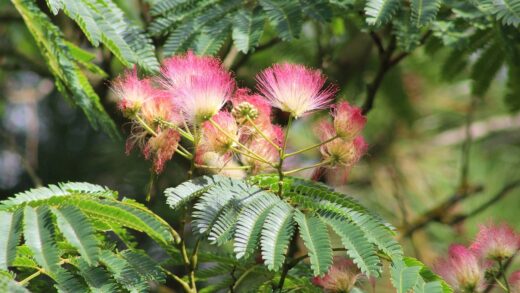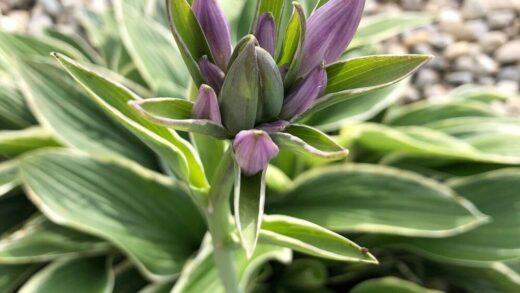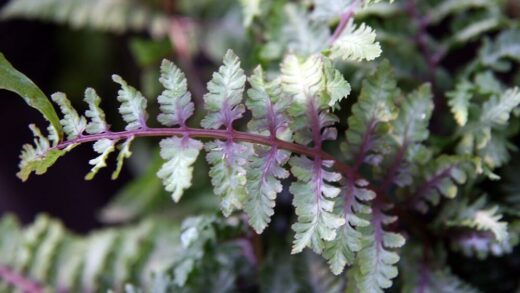The wild service tree, a native gem of European woodlands, is a species that combines ornamental beauty with ecological value, making it an increasingly popular choice for thoughtful gardeners and land managers. Proper care ensures this deciduous tree thrives, showcasing its distinctive maple-like leaves, clusters of creamy-white flowers in spring, and attractive russet-brown fruits, known as ‘chequers’, in the autumn. Understanding its natural habitat and growth habits is the cornerstone of successful cultivation, allowing the tree to establish a strong root system and develop its characteristic broad, domed crown. This guide provides a comprehensive overview of the essential care practices required throughout the life of a wild service tree, from its initial years to full maturity, ensuring its health, longevity, and contribution to the landscape.
Understanding the wild service tree’s nature
The wild service tree is a species deeply rooted in ancient woodland ecosystems, often found growing in the understory or at the edges of deciduous forests. Its natural inclination is towards well-drained, fertile soils, particularly those with a calcareous (lime-rich) base, though it demonstrates a remarkable adaptability to a range of soil types. Historically, its presence was considered an indicator of ancient, undisturbed woodland, a testament to its slow-growing and long-lived nature. Appreciating this heritage helps in recreating an environment where it can flourish, rather than merely survive, in a cultivated setting. This involves respecting its pace of growth and not attempting to force rapid development through excessive fertilization or irrigation.
A key aspect of its nature is its relationship with mycorrhizal fungi in the soil. These symbiotic relationships are crucial for nutrient uptake, particularly phosphorus, and enhance the tree’s overall resilience to environmental stresses such as drought. When caring for a wild service tree, it is vital to foster a healthy soil food web that supports these fungal partners. This means avoiding the overuse of chemical fungicides and promoting organic matter content in the soil through mulching. Understanding this microscopic partnership is fundamental to appreciating the holistic needs of the tree beyond just sunlight and water.
The tree’s life cycle also dictates its care requirements. In its youth, it focuses energy on establishing a deep and extensive root system, which makes it relatively slow to show significant top growth in the first few years. As it matures, it develops a strong, single trunk and a well-structured canopy that requires minimal intervention. The tree is also valued for its timber, which is fine-grained, hard, and has a beautiful finish, historically used for making furniture and musical instruments. This inherent quality speaks to the density and strength of its structure, a characteristic that proper care will enhance and preserve.
Finally, its ecological role is a significant part of its identity. The flowers are a valuable source of nectar for pollinators in late spring, while the fruits provide food for birds and small mammals in the autumn and winter. By planting and caring for a wild service tree, one is not just cultivating an individual specimen but also contributing to local biodiversity. This broader ecological context should inform all care decisions, from pest management choices to pruning strategies, ensuring the tree serves as a beneficial component of the wider garden or landscape ecosystem.
More articles on this topic
Optimal site selection and soil preparation
Choosing the right location is the single most important decision when cultivating a wild service tree, as it sets the foundation for its long-term health and reduces future maintenance needs. This species thrives in a position that receives full sun to partial shade; while it can tolerate some shade, particularly when young, optimal growth and fruit production are achieved with at least six hours of direct sunlight per day. The site should also be sheltered from strong, prevailing winds, which can damage the branches and desiccate the leaves, especially on young, establishing trees. Consider the tree’s mature size—it can reach heights of 15 to 25 meters—and ensure there is adequate space for both its canopy and root system to develop without interference from buildings, overhead lines, or other large trees.
Soil preparation is equally critical and should be undertaken with care. The wild service tree prefers a deep, fertile, and well-drained loam, with a neutral to slightly alkaline pH. Before planting, it is highly recommended to conduct a soil test to understand its composition and pH level. If the soil is heavy clay, it must be amended to improve drainage by incorporating generous amounts of organic matter, such as well-rotted compost or leaf mould, and coarse horticultural grit. Conversely, if the soil is overly sandy and poor, enriching it with organic matter will improve its moisture-retentive properties and nutrient content, creating a more hospitable environment for the tree’s roots.
The physical preparation of the planting area involves more than just digging a hole. The ground should be cleared of all weeds and grass in a circle at least one meter in diameter to eliminate competition for water and nutrients. It is beneficial to loosen the soil in this entire area, not just in the planting hole itself, to encourage roots to spread outwards into the surrounding earth. This process, known as decompaction, is particularly important in previously cultivated or compacted ground. Avoid adding fertilizer directly into the planting hole, as this can scorch the developing roots; instead, focus on improving the overall soil structure and fertility of the wider area.
Finally, consider the long-term soil health of the selected site. The goal is to create a sustainable, low-maintenance environment that mimics its natural woodland habitat. Establishing a permanent mulch layer around the base of the tree after planting is an excellent practice. Use organic materials like wood chips, bark, or leaf mould, which will slowly break down, suppressing weeds, conserving soil moisture, and continuously adding nutrients to the soil. This practice also helps to protect the root zone from temperature extremes and encourages the beneficial soil microbial activity that is so crucial for the tree’s well-being.
More articles on this topic
Early years care and establishment
The first few years after planting are a critical period for the wild service tree, as this is when it directs most of its energy into developing a robust root system. During this establishment phase, consistent and proper watering is paramount to its survival and future vigor. The soil should be kept consistently moist but never waterlogged. A newly planted tree will require regular watering, perhaps once or twice a week during dry periods in its first growing season. The best method is a deep, slow soaking that allows water to penetrate deep into the soil profile, encouraging the roots to grow downwards in search of moisture, which ultimately makes the tree more drought-tolerant in the long run.
Protecting the young tree from physical damage is another essential aspect of early care. The tender bark is vulnerable to being gnawed by animals such as rabbits and deer, which can girdle the trunk and kill the tree. Installing a spiral tree guard or a wire mesh cylinder around the base of the trunk is a necessary precaution in areas where these animals are present. Additionally, a sturdy stake should be used to support the tree for the first one to two years, preventing it from being rocked by the wind, which can damage the delicate new roots and prevent them from anchoring securely in the soil. The stake should be removed once the tree is firm and can support itself.
Weed and grass competition must be managed diligently around the base of the young tree. A vegetated area directly around the trunk will compete fiercely for essential water and nutrients, significantly stunting the tree’s growth. Maintaining a weed-free circle of at least one meter in diameter for the first three to five years is crucial. This is most effectively and sustainably achieved by applying a thick layer of organic mulch, such as bark chips or composted wood, which also has the added benefits of conserving soil moisture and improving soil structure as it decomposes.
Formative pruning may be necessary during the early years to establish a good structure for the tree’s future growth. This should be done minimally and with a clear purpose. The primary goal is to develop a single, strong central leader and a well-spaced framework of branches. This involves removing any competing leaders, as well as any branches that are crossing, rubbing against each other, or growing at very narrow angles to the trunk. All pruning should be done in the dormant season, typically in late winter or early spring, to minimize stress on the tree and reduce the risk of disease infection.
Long-term maintenance for mature trees
Once a wild service tree is well-established, it becomes a remarkably low-maintenance and resilient specimen, requiring minimal intervention to thrive. The primary long-term task is to monitor its health and the condition of its environment. For mature trees, irrigation is typically unnecessary except in cases of extreme and prolonged drought, as their extensive root systems are adept at finding moisture deep within the soil. Instead of regular watering, the focus shifts to maintaining the health of the soil. Periodically replenishing the mulch layer around the base of the tree will continue to provide benefits, suppressing weeds and slowly releasing nutrients into the soil ecosystem.
Pruning of a mature wild service tree should be limited and purposeful. The tree naturally develops an attractive, well-balanced shape, and excessive cutting can spoil its form and create unnecessary stress. The main reasons for pruning a mature tree are to remove dead, diseased, or damaged branches, a practice often referred to as crown cleaning. It may also be necessary to remove lower branches to allow for clearance or to thin the canopy slightly if it becomes overly dense, though this should be done with caution. Any major pruning work on a large, mature tree should ideally be carried out by a qualified arborist to ensure it is done safely and correctly.
Periodic inspection for signs of pests and diseases is a key component of long-term care. While the wild service tree is relatively trouble-free, it can be susceptible to certain issues like fire blight, canker, and aphids. Early detection allows for timely and targeted intervention, which is often more effective and less invasive than treating a widespread problem. A visual check of the leaves, bark, and overall tree structure a few times a year can help you spot any potential issues before they become serious. Maintaining good air circulation through and around the tree can significantly reduce the risk of fungal diseases.
Finally, appreciating the tree’s role in the wider ecosystem is part of its long-term care. Allow fallen leaves to decompose around its base, creating a natural leaf litter that enriches the soil and supports a diverse range of organisms. Avoid compacting the soil within the tree’s root zone, which extends well beyond the spread of its branches. This means preventing heavy vehicle traffic or the storage of materials under the tree’s canopy. By providing these simple, considerate conditions, you ensure the mature wild service tree remains a healthy, beautiful, and ecologically valuable feature of the landscape for many decades to come.
Environmental considerations and benefits
Caring for a wild service tree extends beyond the needs of the individual plant to encompass its positive impact on the surrounding environment. This species is a significant contributor to biodiversity. Its flowers, produced in May and June, are an important source of nectar and pollen for a wide range of insects, including bees and hoverflies, which are essential pollinators for many other plants in the garden. By cultivating this tree, you are actively supporting these vital insect populations. The care you provide, particularly by avoiding broad-spectrum insecticides, directly enhances this ecological benefit.
The fruit of the tree, known as chequers, provides a valuable food source for wildlife during the autumn and winter months. Birds such as blackbirds, thrushes, and fieldfares are particularly fond of the berries, especially after they have been softened by the first frosts, a process known as bletting. Small mammals also consume the fallen fruit. Allowing the fruit to remain on the tree and on the ground provides a natural larder that helps sustain local wildlife populations through the leaner months. This simple act of non-intervention is a crucial part of an environmentally conscious approach to gardening.
The wild service tree is also an excellent choice for improving soil health and stability. Its deep and fibrous root system helps to bind the soil, preventing erosion, which is particularly beneficial on sloped or unstable ground. As a deciduous tree, its annual leaf fall creates a rich layer of organic matter on the soil surface. This leaf litter decomposes to form humus, which improves soil structure, enhances water retention, and provides a slow-release source of nutrients for the tree and surrounding plants, fostering a self-sustaining and fertile environment.
Furthermore, in the context of climate change, planting long-lived native trees like Sorbus torminalis is an important act of carbon sequestration. Throughout its long life, the tree will absorb and store significant amounts of carbon dioxide from the atmosphere in its wood and the surrounding soil. It is also a relatively drought-tolerant species once established, making it a resilient choice for future climate scenarios in many regions. Proper care ensures the tree reaches its full potential size and lifespan, thereby maximizing its environmental benefits and contributing positively to a healthier planet.
Harvesting and using the fruit
The care of a wild service tree culminates for many in the harvesting of its unique and historically significant fruit. The small, brownish, apple-shaped fruits, or chequers, are typically ready for harvest in late autumn, often after the first frosts have occurred. It is crucial to wait until the fruits are fully ripe, as they are incredibly astringent and unpalatable when hard. The ripening process, known as bletting, is essential to break down the tannins and convert starches into sugars, making the fruit soft, sweet, and edible. You can either pick the fruit when it is still firm and allow it to blet indoors, or wait until it has naturally softened on the tree.
Harvesting is best done by hand, carefully selecting the fruits that have turned a deep russet-brown and yield to gentle pressure. If you choose to pick them while still hard, spread them out in a single layer on a tray in a cool, dry place. Over a few weeks, they will soften and their flavour will develop, becoming reminiscent of dates or apple butter. Regularly check the bletting fruit, as the process can happen quickly, and they can easily go from perfectly ripe to overripe. Patience is key to enjoying the fruit at its peak flavour and texture.
Historically, the fruit of the wild service tree was highly valued and had a variety of uses. It was often used to make a type of liquor, particularly a flavourful brandy or schnapps, and was also used to flavour beer and other ales before the widespread use of hops. The bletted fruit can be eaten raw, and its sweet, slightly mealy pulp is a unique treat. It can also be processed into preserves, such as jellies, jams, or fruit leathers, where its distinctive flavour can be preserved for enjoyment throughout the year.
Beyond its culinary uses, the harvest connects the grower to a long tradition of foraging and utilizing the resources of the native landscape. Caring for the tree from planting to fruition fosters a deep appreciation for the cycles of nature and the rewards of patient cultivation. The annual harvest is not just a collection of fruit but a celebration of the tree’s health and productivity. Sharing the unique taste of the chequers with others is a way to share the story of this remarkable native tree and its place in both natural and cultural history.


















